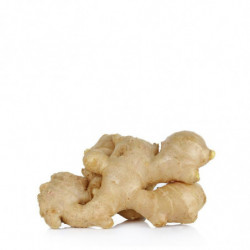- Out-of-Stock


Organic ginger is an underground rhizome of the Zingiber officinale plant, native to Asia. This food is low in calories and packed with essential oils, vitamins, minerals, and phenolic compounds. Its spicy and lemony flavor makes it highly appreciated in both cooking and natural medicine. Discover how this incredible ingredient can elevate your dishes, whether sweet or savory. Straight from organic farming!
 Security policy
Security policy
Website built using newest versions, SSL protocols, Secure payments
 Delivery policy
Delivery policy
Receive your order in 24-48h
 Return policy
Return policy
100% Satisfaction guarantee

Guarantee safe & secure checkout
Organic ginger is a perennial tropical plant belonging to the Zingiberaceae family. Originating from Southeast Asia, this plant has been pivotal for centuries in both cooking and traditional medicine. Discover in this report all the essential information about the botany, agriculture, history, health, and gastronomy of ginger, along with a delicious step-by-step recipe as if you were an expert chef.
Ginger is a herbaceous plant that can grow up to 1 meter tall. Its leaves are long and narrow, with yellow-greenish flowers. The most used part of the plant is the underground rhizome, a thickened and aromatic stem. Rhizomes are bulbous, knotty, and fleshy, varying in size and shape depending on the variety. This crop thrives in warm and humid climates, requiring ample water and sunlight. It is cultivated in countries such as India, China, Thailand, and Brazil, as well as in tropical areas of Latin America and the Caribbean.
Ginger has been a key element in Chinese and Indian traditional medicine for millennia, used to treat various ailments, from nausea to stomach pain. Additionally, it has played a significant role in both Asian and European cuisine since ancient times. It began to be traded in Europe in the Middle Ages, becoming a highly popular spice in the 15th and 16th centuries. During the colonial era, Europeans introduced ginger to North America, South America, and Africa.
Ginger is loaded with bioactive compounds, such as gingerol and shogaol, known for their antioxidant and anti-inflammatory properties. These compounds can also help alleviate nausea, vomiting, and pain associated with inflammatory disorders like osteoarthritis.
Ginger is widely used in Asian cuisine and is a popular spice in Europe and America. It can be consumed fresh, dried, or powdered, adding a special touch to a variety of dishes, from curries and soups to cakes and beverages.